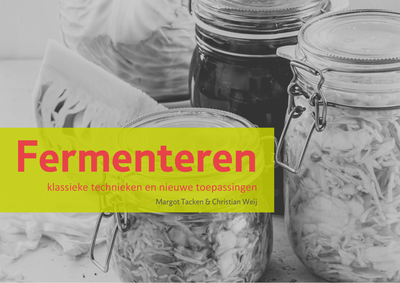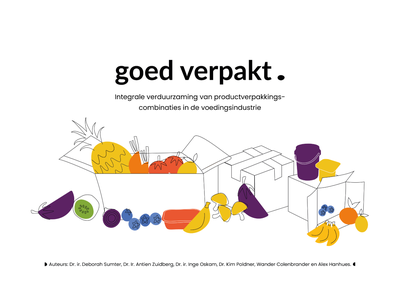ALIFE The “all-in-one” method to measure the Total Dietary Fibre content was implemented at the Hanze University of Applies Sciences. Wholemeal bread and crackers showed the expected % of TDF (approx. 6 and10 %, respectively). Enzymatic treatment with a novel starch-modifying enzyme clearly resulted in an increased TDF content of starch from 1.6% to approx. 27%. Due the limited amount of sample material and low ash-content of starch, ash values were abberant. In the near future, on-going research will reveal whether the MWSDF+IDF of these enzymatically modified starches also possess any prebiotic activity and stimulate growth of probiotic bacteria.
DOCUMENT
ALIFE:The “as eaten” method to measure the Total Dietary Fibre content was implemented at the Hanze University of Applied Sciences (WP 4). The enzymatic treatment with the GtfB enzyme clearly resulted in an increased fibre content of starch from 1.6% to approx. 20% (fig A). When using this modified starch (“as eaten” treated) in an incubation with colon bacteria we see a similar pattern as when using FOS and GOS (fig B). The qPCR results indicate a significant stimulation of the growth of gut bacteria by the GtfB modified starch, as shown by the relative increase of Bacteroides and to a lesser extent Lactobacilli (fig.C). The prebiotic effect remains to be evaluated.
DOCUMENT
The invention relates to the use of modified starch obtainable by treating amylose containing starch in aqueous medium with an enzyme from the group of the α-1,4-α-1,4-glucosyl transferases (EC 2.4.1.25) or an enzyme the activity of which corresponds to that of enzymes from the group just mentioned, as an agent for forming a thermoreversible gel. The invention also relates to products in the form of a thermoreversible gel having as gel-forming substance a modified starch as defined. The invention further relates to the use of a modified starch as defined in the form of an aqueous solution.
LINK
Modified starches are used widely in the food industry but often have a low nutritional value, lacking minerals vital for the human body, such as magnesium. Magnesium addition to native starches has been shown to result in changes in pasting properties. However, little work has been done on the addition of magnesium and other divalent cations to highly oxidised starches. In this work, we used dibasic magnesium hypochlorite (DMH) to oxidise potato starch to an industrially relevant degree of oxidation while at the same time introducing magnesium into the starch structure. We found that magnesium incorporation changes the pasting properties of starch and increases the gelatinisation temperature significantly, possibly due to an ionic cross-linking effect. These properties resemble the properties found for heat-moisture-treated potato starches. This change in properties was found to be reversible by performing a straightforward exchange of metal cations, either from sodium to magnesium or from magnesium to sodium. We show in this work the potential of the addition of divalent cations to highly oxidised starches in modifying the rheological and pasting properties of these starches and at the same time adding possible health benefits to modified starches by introducing magnesium.
DOCUMENT
Een stripboek helemaal gewijd aan de veldboon! Waarom? In het project Bean me up! is drie jaar onderzoek gedaan naar de vraag: kan de Nederlandse veldboon als eiwitbron de soja uit verre landen vervangen? Is de Nederlandse veldboon geschikt om te verwerken in voedingsmiddelen? De resultaten zijn veelbelovend! Wist je bijvoorbeeld dat studenten nieuwe producten ontwikkelen van veldbonen? Wat dacht je van borrelbonen en kaasvervangers? Maar er is nog veel meer te vertellen over de veldboon. En dat allemaal verpakt in strips, afgewisseld door enkele infographics en interviews. Zie de veldboon schitteren als held die de aarde redt, vind de veldboon die groen ziet bij de dokter, geniet van de veldboon die op zoek gaat naar zijn ideale vrouw voor zijn nageslacht. Ervaar zelf waarom de oer-Hollandse veldboon dit stripboek verdient!
MULTIFILE

Veel van onze favoriete voedingsmiddelen zijn gefermenteerd: brood, kaas, yoghurt, chocolade, koffie, olijven, salami, zuurkool, wijn, bier. De techniek van fermenteren is eeuwenoud en geniet een toenemende belangstelling. Wat gebeurt er in een product, tijdens een fermentatieproces, op het niveau van micro-organismen en moleculen? Hoe ontstaan de complexe smaken? Zijn gefermenteerde producten veilig en gezond? Welke rol kan fermentatie spelen in duurzame voedselproductie? Deze reader geeft antwoorden op deze vragen. Toepassing als onderwijsmateriaal (bovenbouw vo, mbo, hbo); bevat twee recepten en verwijzingen naar video’s en experimenten.Deze tekst verscheen in verkorte vorm in: Lugtenberg, Ben. (Red.) (2023). "Gezond met Microben".
DOCUMENT

In het kader van actualisering van voorlichtingspublicaties (een samenwerkingsverband tussen FDP, FME, NIL, NIMR, Syntens en TNO Industrie & Techniek), is deze voorlichtingspublicatie aangepast aan de huidige stand der techniek. De originele publicatie is in 1991 tot stand gekomen door samenwerking van de Vereniging FME/CWM en het Nederlands Instituut voor Lastechniek in het kader van het FME/NIL project "Het lijmen als verbindingstechniek"
DOCUMENT

Honger is nog steeds een wereldwijd probleem, terwijl iedereen genoeg te eten zou hebben als we het beschikbare voedsel goed zouden verdelen en benutten, en het niet zouden verspillen. Maar alleen al in Nederland gooien we ruim 33 kilo voedsel per persoon per jaar weg. Dat moet anders! Door voedsel slimmer te verpakken, kunnen we voedselverspilling én onnodig verpakkingsafval voorkomen. Binnen het project Goed Verpakt hebben we verschillende partijen samengebracht om integraal aan dit onderwerp te werken. Het breed samengestelde consortium bestond uit kennisinstellingen, producenten van aardappels, groente en fruit, producenten van maaltijden en portieverpakkingen, producenten van verpakkingsmaterialen en een brancheorganisatie. Onze centrale onderzoeksvraag was: Hoe kunnen bedrijven in de voedingssector op een meer duurzame manier in de behoefte van de eindgebruiker voorzien, waarbij de gekozen totaaloplossing van de product-verpakkingscombinatie past binnen en circulaire economie en aansluit bij de vereisten van de hele keten? Samen hebben we naar slimme product-verpakkingscombinaties gezocht, waarbij we hebben geanalyseerd welke duurzaamheidsdilemma’s partijen in de keten ervaren en hoe we die kunnen oplossen of wegnemen. Daarbij hebben we ook in beeld gebracht wat de betrokken partijen zelf kunnen doen en wat zij voor elkaar kunnen krijgen door een nauwere samenwerking binnen de keten. Voor slimme product-verpakkingscombinaties is ook de overheid een onmisbare partner. Onduidelijkheid, een gebrek aan daadkracht en te eenzijdige wet- en regelgeving werken averechts en ondermijnen het streven naar meer duurzaamheid binnen de sector. Beleidsmakers onderschatten de expertise die nodig is om dit goed te regelen. Maar verduurzaming is dus vooral een kwestie van nauwer samenwerken. Met partners binnen de branche, met interessante partijen buiten de branche én met de overheid. We formuleren in dit document alvast onze negen gouden regels van integraal duurzaam verpakken. Daarnaast blijven de betrokken kennisinstellingen onderzoek doen naar dit onderwerp. Bijvoorbeeld naar consumentengedrag en – intenties en naar de inzet van de Rethink-methode voor het herontwerpen van product-verpakkingscombinaties. Zo zorgen alle betrokken partners voor een circulaire toekomst waarin voedsel steeds slimmer verpakt wordt en we met een minimum aan afval zo veel mogelijk voedsel beschikbaar maken voor iedereen.
DOCUMENT
